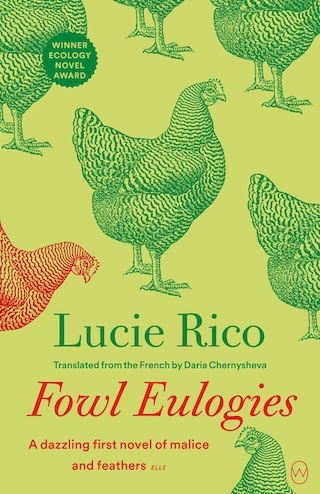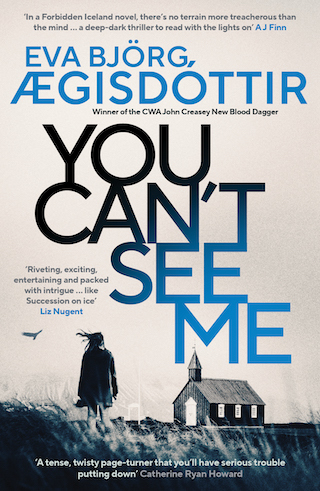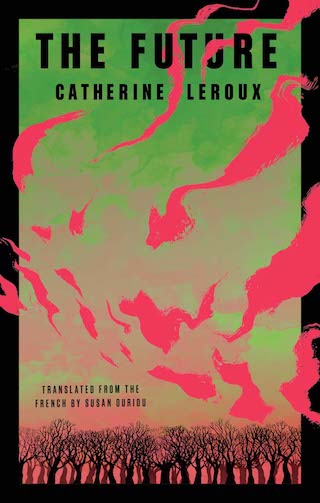Four Books for Women in Translation Month
Given that the posts over the past week plus have been very heavy on Open Letter and Dalkey Archive titles (*cough* and or exclusively about OL and DAP titles *cough*),, I thought I’d take a minute to point out a handful of Women in Translation books that I recently found out about and am adding to my “to read” pile.

Fowl Eulogies by Lucie Rico, translated from the French by Daria Chernysheva (World Editions)
Upon her mother’s death, Paule Rojas, a vegetarian city-dweller, returns to the chicken farm where she grew up. Pressured to fulfil her mother’s last request, Paule rediscovers pleasure and meaning in running the old family business. Yet, eager to bring something of herself to a family tradition, Paule embarks on increasingly intricate ways of helping the chickens to self-actualize before their deaths. She records the chickens’ life stories, adding them to the labels that decorate the vacuum-packed meat sent off to market—an individual biography for every chicken. But not all runs smooth in her childhood village; Paule finds she has few friends and many enemies. She is forced to spread her wings, relocate her livestock, and oversee the construction of an urban farm of never-before-seen practices and proportions.
This was mentioned during out Consortium Book Sales & Distribution pre-sales conference call, in which one of the CBSD team members said that it would make a good comp title for River by Laura Vinogradova, which Kaija Straumanis is translating from the Latvian for us. (Spoiler: An excerpt will appear here tomorrow.) I’m not sure how much chicken slaughter or death talk I’m really there for these days, but stories of a woman making her own way (or struggling to do so), like in River, Wolfskin by Lara Moreno, Un Amor by Sara Mesa—these books are right in my wheelhouse right now.
*
 You Can’t See Me by Eva Björg Ægisdóttir, translated from the Icelandic by Victoria Cribb (Orenda Books)
You Can’t See Me by Eva Björg Ægisdóttir, translated from the Icelandic by Victoria Cribb (Orenda Books)
“The wealthy, powerful Snæberg clan has gathered for a family reunion at a futuristic hotel set amongst the dark lava flows of Iceland’s remote Snæfellsnes peninsula.
Petra Snæberg, a successful interior designer, is anxious about the event, and her troubled teenage daughter, Lea, whose social-media presence has attracted the wrong kind of followers. Aging carpenter Tryggvi is an outsider, only tolerated because he’s the boyfriend of Petra’s aunt, but he’s struggling to avoid alcohol because he knows what happens when he drinks . . . Humble hotel employee, Irma, is excited to meet this rich and famous family and observe them at close quarters . . . perhaps too close . . .
As the weather deteriorates and the alcohol flows, one of the guests disappears, and it becomes clear that there is a prowler lurking in the dark.
But is the real danger inside . . . within the family itself?
Masterfully cranking up the suspense, Eva Björg Ægisdóttir draws us into an isolated, frozen setting, where nothing is as it seems and no one can be trusted, as the dark secrets and painful pasts of the Snæberg family are uncovered . . . and the shocking truth revealed.
Succession meets And Then There Were None . . . A Golden Age mystery for the 21st Century, with a shocking twist.”
Couple, few things: 1) Eva Björg Ægisdóttir’s series (of which this is book number four) is “Forbidden Iceland,” which is pretty sexy; 2) I’ve added a ton of Orenda Books to the database recently, so check them out if you’re looking for really interesting international crime fiction; 3) before helping lead a trip of University of Rochester alums through Iceland, I read approximately 1,000 Icelandic books, from Laxness to Njall’s Saga. And, more relevant to this, a number of Icelandic mysteries and thrillers.
My absolute favorite so far has been Yrsa Sigurðardóttir, whose Thóra Gudmundsdóttir series I’ve been enjoying. Especially on audiobook. And especially, especially because I listen at 1.2x speed, which makes everyone’s accent sound both whimsically sing-song, and sort of British?
Anyway, based on how much I’ve enjoyed her books (and the Ragnar Jónasson books from Orenda), I’m willing to read any Icelandic mysteries Orenda puts forth. I don’t know why this is called the “Forbidden Iceland” series, but I like that it’s set in a reasonably small Icelandic town (Arkanes, pop. 8,000), which is a feature of Icelandic crime that I love, with the small number of characters lending itself to Agatha Christie-type mysteries.
*
The Future by Catherine Leroux, translated from the French by Susan Ouriou (Biblioasis)

In an alternate history of Detroit, the Motor City was never surrendered to the US. Its residents deal with pollution, poverty, and the legacy of racism—and strange and magical things are happening: children rule over their own kingdom in the trees and burned houses regenerate themselves. When Gloria arrives looking for answers and her missing granddaughters, at first she finds only a hungry mouse in the derelict home where her daughter was murdered. But the neighbours take pity on her and she turns to their resilience and impressive gardens for sustenance.
When a strange intuition sends Gloria into the woods of Parc Rouge, where the city’s orphaned and abandoned children are rumored to have created their own society, she can’t imagine the strength she will find. A richly imagined story of community and a plea for persistence in the face of our uncertain future, The Future is a lyrical testament to the power we hold to protect the people and places we love—together.
*
You Glow in the Dark by Liliana Colanzi, translated from the Spanish by Chris Andrews (New Directions)
“The seven stories of You Glow in the Dark unfold in a Latin America wrecked and poisoned by human greed, and yet Colanzi’s writing—at once sleek and dense, otherworldly and intensely specific—casts an eerily bright spell over the wreckage. Some stories seem to be set in a near future; all are superbly executed and yet hard to pin down; they often leave the reader wondering: Was that realistic or fantastic? Colanzi draws power from Andean cyberpunk just as much as from classic horror writers, and this daring is matched by her energizing simultaneous use of multiplicity and fragmentation—the book’s stylistic trademarks. Freely mixing worlds, she uses the Bolivian altiplano as the backdrop for an urban dystopia and blends Aymara with Spanish. Colanzi never gets bogged down; she can be brutal and direct or light-handed and subtle. Her materials are dark, but always there’s the lift of her vivid sense of humor. You Glow in the Dark seizes the reader’s attention (from the title on) and holds it: this is a book that announces the arrival of a major new talent.”
This is on here both because I am intrigued in reading it (Bolivia has some killer writers in translation), but also because I read Colanzi’s debut, Our Dead World, for a forthcoming “Reading the Dalkey Archive” post, right before I saw an announcement for this collection. (In fact, I was going to post a piece about her this week, but I’ve been wicked sick and am all wrapped up in writing about a different Dalkey title . . .)
I’m not a huge short story reader or admirer, but I’m going to try and read more collections in the future. Little bits of bite-size fun amid the gigantic, epic books that I seem to always be editing or proofing. (Although, and the full list will be available soon, the Summer 2024 Open Letter list consists of all books under 200 pages. BUCKING OUR OWN TREND.)

Leave a Reply